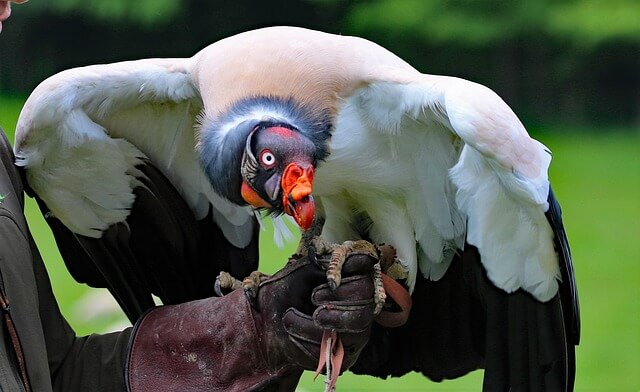There are many misconseptions about the animal world, and even adults still believe in some man-made concepts which circulate constantly in a circle.
Toads
Myth: Toads give us warts
This is a surprisingly common misconception, and a lot of people use Google to find out if there is any truth about this statement. Meanwhile, the truth about this animal is that there is no truth in it at all.
The myth is most likely related to the fact that parents usually tell their children not to touch toads they just found in the mud. However, it turns out that warts can be picked up almost anywhere. They are caused by the human papillomavirus, but it has nothing to do with toads.
Nevertheless, parents can still find a good reason for their children not to touch toads!
Toad skin contains bufotoxin, which can cause irritation
Gold fish
Myth: Goldfish have a bad memory
Another common myth is that goldfish have a very short memory and that they are very stupid. It turns out that in fact, goldfish are quite intelligent creatures. Therefore, they probably would not be happy about such attempts to tarnish their intelligence.
The memory of the goldfish is actually quite developed. They are able to remember some events for weeks and even can be trained to perform complex tasks. Among the set of tasks that can surely do some things. Therefore, they push levers, ring bells – in other words, they are almost as smart as rats.
Cheetahs
Myth: The cheetah is the fastest animal in the world
There is some truth in this statement, because the cheetah is the fastest land animal in the world. At short distances it reaches a speed of 68 mph (109 km / h), which exceeds the speed limit on many US roads.
However, the cheetah is not the fastest animal on the planet, this title belongs to a bird. The needle-tailed swift is the fastest living creature on the planet. In horizontal flight, this white-throated needletail can reach a speed of more than 69 mph (111 km / h).
In addition, the fastest fish in the world, sailboats, essentially tied for second place with cheetahs, swimming at 68 mph (109 km / h).
Hay spiders
Myth: The venom of the hay spider is more poisonous than the venom of any other spider. However fortunately the spider cannot bite through human skin.
Many believe that hay spiders are extremely poisonous. At the same time, there is a misconception that their mouths are too small to bite a person.
MythBusters refuted these popular misconceptions in an experiment in which a spider successfully bit Adam’s hand
The American special effects designer admitted that he felt nothing but a very faint instant burning sensation at the site of the bite. The analysis showed that these spiders are not poisonous and safe for humans.
Ostriches
Myth: Ostriches hide their heads in the sand
This is one of those myths that has become incredibly ingrained, mainly thanks to the many cartoons that make us take this “ostrich habit” for granted.
We’ve all heard that when someone doesn’t want to deal with a problem, they “dive their heads in the sand like an ostrich,” supposedly birds do this when danger is near. Meanwhile, ostriches tend to run away if they sense an approaching danger, and are also quite able to defend themselves with powerful blows of their beak or legs.
In reality, in case of potential danger, ostriches simply lower their head so that it is more difficult to notice them
Bulls
Myth: A red color rages bulls
Testing the bull on mechanical matadors with rags of different colors (motionless and oscillating), experiments showed that the bull becomes furious from the oscillating rag, and not from the red color or the silhouette of a person. Finally, the expert performed a “deadly trick” by standing motionless on the court in a red suit while two professional cowboys teased the bull. In general, although bulls can distinguish colors (they have dichromatic vision), they react to movement.
Snakes
Myth: Snakes hear and respond to music
The snake spell is one of the most interesting and at the same time dangerous tricks. The snake charmers play the flute and the snake sways to the music, enchanted by the soothing notes.
Well, except that everything in the last sentence is not true. It turns out that snakes do not hear what people are doing. These animals can feel vibrations, and in the process of casting a spell, the snakes actually react to the movements made by the fakirs, and not to the sound of the flute.
It turns out that, like many street performers, snake charmers are more concerned about their performance being spectacular. Meanwhile, fakirs can treat their creeping performers badly: many snakes undergo a dangerous and painful procedure – the removal of fangs.
Koalas
Myth: Koalas are bears
Many people refer to the cuddly little furry creatures that live on eucalyptus trees in Australia as “koala bears”. This definition is quite clear, because these animals are really very similar to miniature bears, but in fact they are marsupials.
The koala is a marsupial because it has a pocket
It turns out that koalas are actually much closer to wombats than to bears.
Dogs
Myth: You can’t teach an old dog new tricks
Many have heard this expression and took it for granted. Research has been done on older dogs and it has been found that with the right training. They can learn new tricks just like younger dogs.
Dolphins
Myth: Dolphins are always friendly and helpful
There is one thing that is usually said with confidence. Dolphins will always support a person in the ocean, save them from sharks and help find their way to the shore. However, the reality is not so rosy – sometimes dolphins can be killers! Recently, scientists have made some very disturbing discoveries about dolphins and how they tortured a baby dolphin to death. The fact remains that dolphins harm their own kind.









